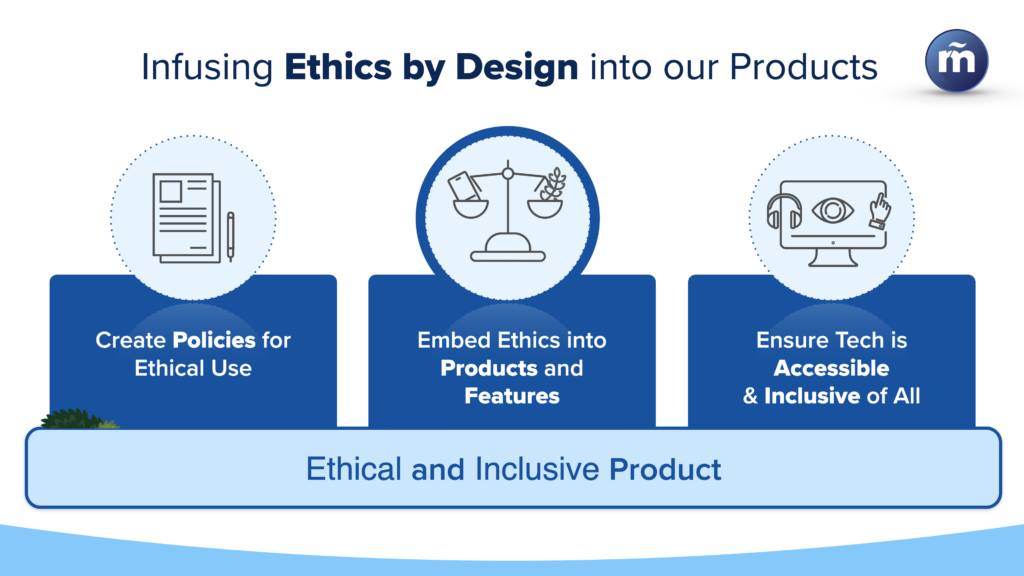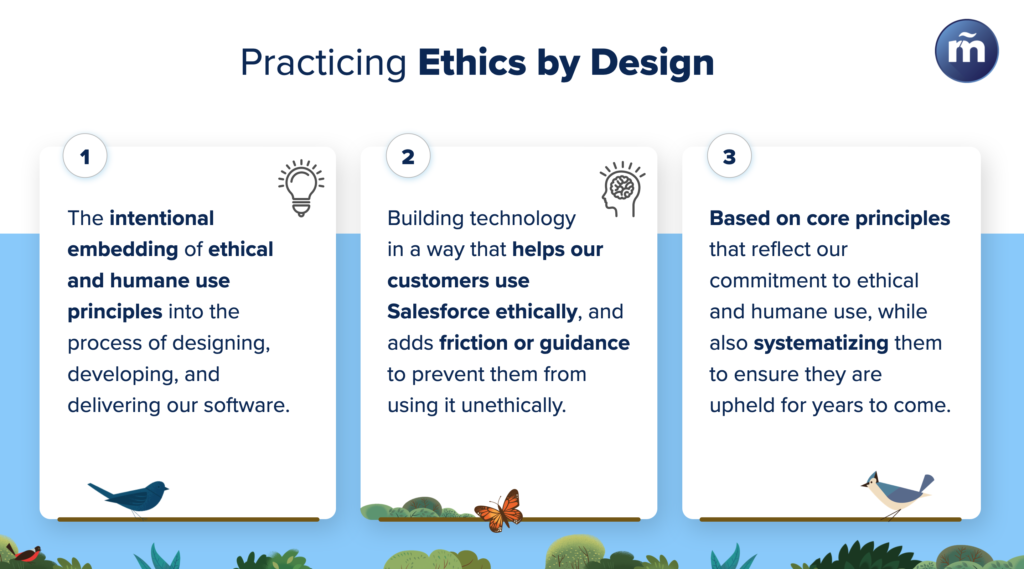Ethics in Practice
Moving from Awareness to Action
Powerful tools that gather, store, and leverage sensitive, personal data have inherent risks of creating harmful impacts that can affect individuals or businesses that use them. Ethics by Design is a crucial piece of modern product development that provides the frameworks to identify and mitigate these risks. Understanding possible risks created or exacerbated by the products we build is key to empower teams to embrace humanistic values. And far from an impediment to innovation, adopting this mindeset can drive better outcomes while reducing risks and protecting businesses, customers, and consumers.
Embedding responsible design practices in product development
Taking Action on Ethics
It’s one thing to embrace the notion of ethical, responsible design. Putting those ideas into practice is a different challenge that requires aligning the positive impact of the work with your organization’s mission and values. As an example, values and customer promises like Trust, Innovation, Customer Success and Sustainability are meaningful statements of priorities and invesments that can and should align with ethical design principles.
Once we’ve made the connection between our values and the positive impacts of ethics by design, it’s time to identify some specific guiding principles to focus our efforts. These principles should be practical, real-world guide posts based on research and insights from ethics experts. We might consider global standards on civil, social, and political rights, as well as industry-specific considerations. These principals are important guides to anticipate and manage the potential unintended consequences of the tools we build that might be generalized, and those that might be specific to our industry.
From Awareness to Integration
Building Ethics into your design DNA
Awareness & Education
Establish a foundational understanding of ethics in design. This includes conducting initial training sessions, sharing ethical principles, and engaging teams in discussions to raise awareness about ethical considerations in design.
Action Steps:
- Introduce ethics-focused resources and materials.
- Facilitate team discussions or workshops to explore ethical implications in design work.
Risk & Impact Assessment
Encourage teams to assess potential ethical risks and impacts associated with product features. Use tools and structured processes to identify areas where ethical considerations may be crucial.
Action Steps:
- Use risk assessment frameworks to evaluate key ethical concerns.
- Engage in workshops to examine the possible consequences of design decisions.
Solution Ideation & Mitigation
Develop strategies to address identified ethical risks. Collaborate with cross-functional teams to brainstorm solutions that mitigate potential negative impacts while upholding user trust.
Action Steps:
- Host ideation sessions with diverse stakeholders.
- Explore ethical design solutions and validate approaches through user-centered methods.
Design, Validation & Review
Refine and validate the proposed solutions by consulting with key stakeholders and, if possible, with end-users. Prioritize solutions based on their feasibility and ethical impact.
Action Steps:
- Document and review solutions with product, legal, and engineering teams.
- Gather feedback and prioritize solutions based on effectiveness and viability.
Integration & Roadmap Alignment
Integrate ethical considerations into the product roadmap, ensuring that they become a regular part of the development process. Advocate for ongoing updates to keep ethical practices aligned with organizational goals.
Action Steps:
- Include ethical solutions in the product roadmap.
- Work with product teams to ensure ethics-focused initiatives are updated and maintained over time.
This view of key stages offers a model of what it might look like for any team – or if you are ambitions, even an individual – to embark on you Ethics by Design practice. This process could span from just a few weeks to a few months depending on the scope, focus, size of the team involved, and level of fidelity you’re aiming for.
Some elements are optional. But most importantly, this is a simple and repeatable method to get this work done. It does involve advocacy and investment from senior leadership to get real traction, and that’s part of the journey.
Let's Get It
I believe that design is a powerful tool to improve the world. I care deeply about creating humanistic software that empowers and delights the people who use it. I’m looking for my next opportunity to make an impact. If you think we might be a good match, please drop me a line.


- This process map offers a model of how any team – or for the ambitions, even an individual – can put Ethics by Design into practice.
- This series of steps could span a couple of weeks, or a few months, depending on the scope, focus, size of the team involved, and level of fidelity you’re aiming for.
- Some steps are optional. But overall, the basic idea here is that there’s a simple and repeatable method to build Ethics into your product development cycle. It takes work, it involves advocacy, and investment from senior leadership to get real traction, and that’s part of the journey.
